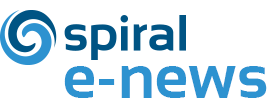Estimated Reading Time
- 3 Minutes

The Changing Face of Print
With the rise of digital media, there’s been a seismic shift in the presentation of information from analog to digital. But even though more sources are switching to digital formats, print is far from dead. In fact, it’s growing—just not in the ways you might expect. While overall print volume is declining, the dollar value of the print market is increasing. As more consumers shift to online purchasing, more emphasis is being placed on the quality and appearance of labels and packaging. Savvy consumers and increasing demand are pushing printing to deliver more complex, specialized outputs that cater to highly specific marketing initiatives and business demands.
Digital Printing – A Beacon of Growth
While there are still some applications for analog printing (even the New York Times transfers a digital master to analog printing plates for each morning’s run), digital is today’s dominant technology. As consumers’ needs have shifted, the on-demand, personalized nature of modern printing has favored digital. With the market’s aforementioned shift from quantity to quality, digital provides the flexibility to produce completely different jobs in rapid succession without logistical hurdles.
But beyond practical matters, digital is also a way to keep an eye on the future. The next innovations in print technology will undoubtedly come in the digital domain, and businesses that want to stay relevant in a rapidly changing world will need to embrace digital printing to stay ahead of the curve. Additionally, as the marketplace continues to place a higher demand on sustainable practices and eco-friendly supply sourcing, digital technologies allow for increased efficiency and less waste.
The iJet Color Pro PXG: A Game Changer in Print Technology
As more small businesses compete in the consumer packaged goods space, companies have to differentiate themselves through eye-catching packaging and marketing materials with cutting-edge designs. The iJet Color Pro PXG is one of the highest-end digital printing solutions on the market, allowing for easy printing on cardboard, bags, coffee sleeves, and nearly anything you can imagine. Its highly flexible, easy-to-use platform allows for pivoting quickly between different clients and jobs all while keeping every step of the process in-house.
The technology in the iJet Color Pro PXG doesn’t just create beautiful work, though–it’s incredibly efficient. The HP thermal inkjet system delivers output at one-third the cost of similar inkjet systems, limiting expenses and saving environmental waste. As smaller, more custom runs become more common, machines like this high productivity inkjet require less print volume to turn a profit.
Post-Pandemic Recovery and Challenges
The 2020 Coronavirus Pandemic impacted nearly all industries in its worldwide disruption of markets, and print was no exception. Print output dipped 11.6% during the pandemic despite the overall trend towards higher dollar valuation in the print market. Supply chain challenges have hit everything from computer chips in cars to home-building materials, sparing neither ink nor paper.
While conditions have stabilized after 2020, are still returning to their normal pre-pandemic status quo, and it’s vital for businesses to stay efficient for maximum profitability and to deliver reliable results. By investing in efficient technologies available through digital printing, businesses can limit their exposure to supply chain woes now and in the future. Digital printing tools allow tighter control over consumption and efficiency, making it easier to adjust processes and invest for the future.
The Path Forward
Printing is not an easy business, and staying ahead of the game relies on anticipating the market’s needs and keeping print costs as low as possible. Balancing all of that isn’t simple, but embracing innovation in digital printing can open up future growth. With more and more brands trying to wedge their way into the consumer goods market every year, packaging is getting more intricate and eye-catching to help companies stand out from the crowd. The current printing market represents a huge opportunity for businesses to hop on novel approaches for higher quality, lower output printing.
Printing in 2024
From its analog beginnings to the current dominance of digital, print may be constantly changing, but it’s clearly not going away. While the current market is showing a dip in overall print volume, the increase in dollar value shows that print industry growth continues in new ways. The key to success is viewing these shifts not as challenges but as new opportunities for growth. All you need to do is be prepared, and that starts with embracing the right mindset (and equipment) for the future.
Interested in staying on top of print and industry trends? Sign up for our newsletter.


Leave a Reply